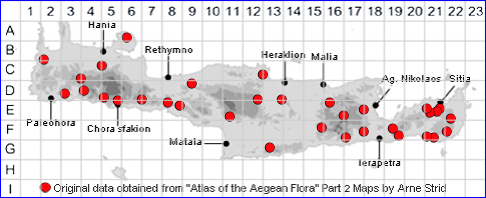SPECIES DESCRIPTION
SILENE GIGANTEA subsp. GIGANTEA
Family and Genus:- See- CARYOPHYLLACEAE/Sect. SIPHONOMORPHA
Common Names:- None
Homotypic Synonyms:- None
Meaning:- Silene (Gr) A name used by the Greek philosopher Theophrastus for
catchfly.
Gigantea (Gr) Unusually large or tall, gigantic.
General description:- Robust, short-lived, usually monocarpic perennial.
Stem:-
1) 30-120 cm tall, very viscid on upper internodes.
Leaves:-
1) Basal, numerous, in a distinct rosette retained at anthesis, obovate-
spathulate, ciliate.
Flowers:-
1) Inflorescence, of many-flowered, condensed lateral dichasia forming
verticillasters.
2) Calyx, 8-12 mm. clavate, truncate or umbilicate at the base.
3) Petal-limb, 3-5 mm, greenish-yellow, deeply bilobed.
Fruit:-
1) Capsule, broadly ovoid, at least 3 times as long as anthophore.
2) Seeds c. 1.5 mm, grey, with acute, tuberculate shoulders.
Key features:-
1) Calyx, clavate, truncate or umbilicate at the base.
2) Petal-claw, only slightly exserted.
3) Flowers, erect; inflorescence not directed towards one side (secund).
4) Capsule, c. at least 3 times as long as anthophore.
Habitat:- Cliff crevices and ledges, occasionally in roadside gravel. 0-900(-1400) m.
Distribution:- Widespread throughout the Mediterranean region. Fairly scattered
on Crete, but not common.
Flowering time:- Apr-July.
Photos by:- Steve Lenton
